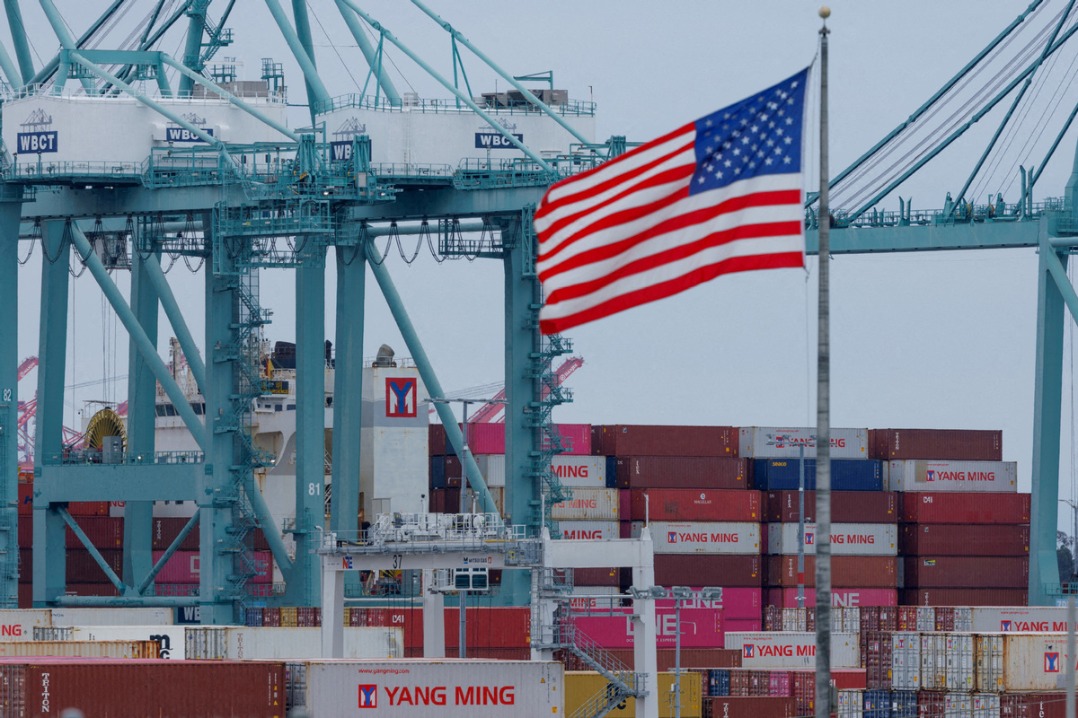Past the point of no return


New wave of globalization propelled by new technology will not be reversed by the pandemic
The once-in-a-century pandemic has had a huge impact on people, countries and the world at large. One of the most frequently asked questions is: What will the world look like after the novel coronavirus is tamed? In particular, will the current trajectory of globalization change?
The great uncertainties surrounding the pandemic have made pessimism prevail, as a result globalization will be scaled back, and the world will enter an era of "staggered" globalization, or even an era of de-globalization and counter-globalization.
The free flow of people and the interconnectedness of countries that have characterized globalization, to some extent, caused and exacerbated the spread of the novel coronavirus. The division of labor on a global scale also contributed to the shortages and even cutoffs of anti-epidemic materials in some countries.
The pandemic has highlighted the importance of independent industrial chains. As transport has been closed down in face of the spread of the virus, it has highlighted that industrial autonomy is essential to protect national security and even people's lives. New York State Governor Andrew Cuomo lamented in a televised speech that anti-epidemic supplies, from masks, protective clothing, goggles to test kits and ventilators, are all imported, mainly from China.
It is foreseeable, therefore, that after the pandemic is controlled, many countries will call back their overseas industrial chains and cultivate domestic industries relating to people's livelihoods and basic needs, which will impact the global industrial chains, value chains and supply chains.
Also the pandemic has raised awareness of state sovereignty, which will make it more difficult for states to transfer their sovereign decision-making in future to reach or participate in international agreements. This will undoubtedly be a curb to globalization.
The pandemic has also amplified the rhetoric of counter-globalization. With the pandemic causing an economic recession and a decline in living standards, racism, populism and extremism are on the rise. Globalization then will become the scapegoat of the foreseeable social chaos.
Standing at this historical watershed, what we need is sober reflection on the future.
It is not difficult to see that the pandemic will influence the development of the world, but with the caveat that from an objective, historical perspective, the pandemic is only a breaker in the tides of human history, albeit one exerting a far-ranging influence on the world. The factor driving human history forward is productivity and the mode of production. Other factors, even one as big as a pandemic, will not reverse or determine the direction, they can only accelerate or delay the trends.
The process of globalization has continually strengthened the connections of the world by expediting the flows of people, technology, capital, information and services, enhancing the awareness of a global community. At the preliminary stage, globalization was basically an economic and trade concept; but as the years have gone by, its connotations have been enriched and extended into political, security, social and cultural spheres.
Globalization was powered by social productivity and the modes of production. Its embryo can be traced back to the great epoch of maritime navigation starting from the end of the 15th century when marine technologies and geographical discovery brought together the world. Thereafter, the three technological revolutions, especially the third one featuring telecommunication technologies made the world smaller and formed an interconnected community with intertwined interests.
The emergence of the fourth technological revolution nowadays, which features internet industrialization, industrial intelligence and industrial integration, have only quickened the trend of globalization. New technologies such as artificial intelligence, quantum information, new energy and modern biologics will realize the fusion of physical and information systems, the internet of things-plus.
Against this backdrop, the connections between people, between people and the society, and between states will be even closer. All human beings are becoming a community of shared interests, responsibilities and destiny. Anyone or any country will find it hard to survive if isolated from the wider global community.
Another reason why globalization is not stoppable is the profit-seeking nature of economic activities. Adam Smith in The Wealth of Nations proposed that human nature is self-interest and that the pursuit of personal interests is the only motivation for people to engage in economic activities. That remains true today: Economic activities hinge on the doctrine of maximizing profits, so the elements of production flow globally.
Hit by the pandemic, countries are expected to roll out protective measures that rein in economic activities, such as developing industrial autonomy or even establishing total factor industrial chain.
But our profit-driven nature determines that these practices are temporary and partial. For most countries, the costs of building a total factor industrial chain are huge. So the idea will fade over time and countries will again resort to globalization to make the allocation of resources reasonable and efficient so as to maximize the interests of all parties.
In short, the novel coronavirus may lead to a contraction of globalization, but will not reverse the trend. In particular, the emergence of the fourth technological revolution will help the world get out of the low ebb, and head for the globalization in a faster pace.
The author is deputy director of the Institute of World Economics and Politics at the Chinese Academy of Social Sciences. The author contributed this article to China Watch, a think tank powered by China Daily. The views do not necessarily reflect those of China Daily.


































